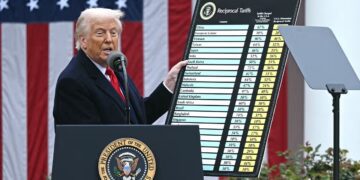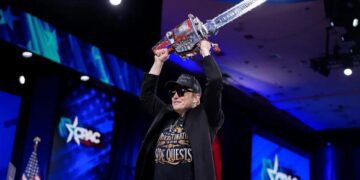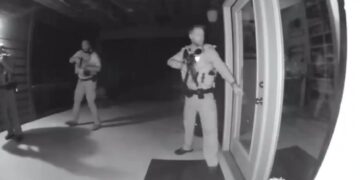
By John F. Di Leo -
While budgets should have been getting tighter for years now, some states, at least, are finally awakening to the need to watch their spending. Well, better late than never, right?
One example of this newfound awareness is the effort of some to reconsider our generous subsidies for solar panels, particularly the rooftop panels that one sees high atop single family homes across otherwise reasonable suburbs. Mississippi, Florida, and other states are in the news right now as they debate the question of rethinking the levels at which the taxpayer ought to subsidize the homeowner for this choice of dubious economic value.
It costs between $15,000 and $70,000 to install solar panels atop the roof of a normal single family home. Why the broad range? The pitch of the roof, the brand of the panels, the total square footage, and so forth. The prevailing wage of such installers varies widely across the country… and the relative value of the installation varies from side to side of the same street.
Different states offer different levels of subsidies, to encourage you to make this incredible investment in your home. Once the panels are installed, your house might only need to buy 40% of the power you used to buy… or you might not need to buy electric power anymore at all! You may even be able to become a net energy provider, no longer taking from the grid, but rather, selling back your surplus power and getting a small check from the utility every month. Sounds thrilling, doesn’t it?
They promise you that the panels will pay for themselves, in ten years, or fifteen or so. Your house will stand for a hundred years; it’s a value-addition to the house, reflected when you resell your home. That's the sales pitch. Sure sounds like a win-win.
And yet… and yet… still the warnings come that solar isn’t all it’s cracked up to be.
A Rooftop Challenge
Let’s begin by considering the process of installing these panels on the roof. Either you use “traditional” solar panels, which go on top of the shingles, or you use even more modern solar shingles, which play the role of both shingle and power generator.
The regular shingles are already up there for a reason – to protect your roof from leaks. So if you already have five or ten years on your existing shingles, you might want to replace them (a decade early) just because it makes more sense than asking for a more complex shingle job later.
And what is it that jeopardizes your shingles in the first place? Holes, dings, penetration, rot. The goal is to have a perfectly sealed roof. Installing great big solar panels on top of it means drilling holes and bolting this equipment in; essentially peppering your roof with potential compromise points that could shorten the life of not just your roof, but the home below.
The solar installers know this, of course, and prepare for it, carefully sealing each point of entry so that your roof isn’t compromised. And this is why it’s such an incredibly expensive job; you need the most talented roofers to install this equipment. It’s about skilled labor rather than unskilled, because unskilled could give you a leaky roof that destroys your ceilings, your walls, your electrical wiring… you name it.
Every such bolt, however professionally sealed, is another potential risk. None might ever fail, one or many might fail, necessitating roof work again, far sooner than should be needed on a "thirty year roof."
Roofing is a hard job at the best of times; complicating it by adding such an installation makes it that much more dangerous, more expensive, and more of a question to ponder before even starting down this particular road.
Does it pay for itself?
The big question that every homeowner asks is, will this pay for itself, over time? We can’t answer without considering the level of subsidy. If the government subsidizes the entire cost of materials and installation, then it might, from your personal perspective, even if it doesn’t pay for itself from society’s perspective.
Let’s say, your installation costs $36,000, and in twenty years of usage, your solar panels produce an amount of energy that would have cost you $150 per month in electric bills if you’d bought it from the grid. That’s $36,000 in “savings” so it appears to net zero. If the government subsidized 50% of the installation so you only paid $18,000, then it may well feel like it paid for itself in the first ten years, with the following ten being gravy. But the taxpayers (of which you are one) fronted that matching share, so it wasn’t really a savings at all. It was just a redistribution. If the government had subsidized the full $36,000, it would certainly feel like a deal then… but again, would it be, really? Or would it be a shell game?
Nothing happens in a vacuum. When you change your house this way, other costs and risks arise. Your monthly electric bill may drop, but by adding $36,000 in equipment to your roof, your homeowner’s insurance premium should go up.
And why should that premium go up? Because you now have something more that can go wrong. Just as hailstorms, microbursts, tornados and other windstorms can wreak havoc upon a normal roof, they can do even more costly damage to an expensive rooftop structure like this. Does hail damage a shingle? Can high winds rip a shutter or gutter off your house? Then you can be sure the weather can damage an expensive solar panel too.
Your roof will still need new shingles every so often; the panels make their replacement a harder and more expensive job, every time. Some of your panels will occasionally fail, and require replacement or repair. Is that a dealbreaker? No, but it’s a fact to consider.
As these risks increase, your return on investment decreases. Enough to turn it from a good idea to a bad idea? Maybe, maybe not. The important thing is to recognize that the issue is there, and must be looked into, rather than looking with laser focus on your before-and-after electric bills, to the exclusion of the big picture.
Where are we?
The first question asked by any solar installer is where the house is located. Will the panels be in the direct path of the sun as it travels across the sky each day? Your home’s facing makes a difference; whether it’s between two taller buildings makes a difference; whether you have the lovely shade of tree branches above or ahead of the house, in the way of the sun, beautifully reducing the amount of sunlight that hits the panels… well, all that makes a difference too.
Now you have other kinds of upkeep to add to your home's maintenance schedule. You have to have your trees trimmed more often, your attic ceiling (the underside of the roof) checked more frequently for leaks and other compromises, more electrical connections to watch out for.
But perhaps most importantly, especially for those of us in Chicagoland… just like everything else in real estate, it’s all about Location, Location, Location.
Solar panels only trap energy when they can grab it from the sun. While they can get a little energy from cloudy days, they are most productive on sunny days. Most of the success statistics boasted by the solar energy lobby focus on their products' productivity on those clear days.
And in the Chicago area, we get about 84 such clear days per year.
Yes, in a calendar year of 365.25 days, Chicagoland gets 84 clear days.
This writer, Gentle Reader, is in Chicagoland as he writes. We’re in a high precipitation region here in zone four, you know. We have clouds, rainstorms, drizzle or snowfall far more often than we have sun around here. Even people who love this climate must admit that, when it’s not raining or snowing, it’s likely to be getting ready to do so… hence the high proportion of cloudy days.
Does 84 clear days per year sound like a good investment, for solar panels?
Oh, but that’s not the whole story either.
Remember that, while rain runs into the gutters or evaporates, snow and ice stick around. Snow takes days, or even weeks, to melt… and you can’t climb up on your roof to shovel away the snow like you could when it fell on your sidewalk or driveway.
Many of those clear days are therefore useless as well, with ten of them, or fifteen, or twenty, depending on the year, falling on lovely days when the sun is shining but the snow and ice still cover the solar panels. This leaves us with perhaps 65, or even 60, clear days per year in which our solar panels can operate at full benefit.
Does that still sound like a good investment?
And what about the biggest of big pictures: how does this source compare with other power sources? Is it as good as coal? As good as natural gas? As good as hydroelectric? As good as nuclear? As good as geothermal? As good as petroleum?
Without that comparison, we still can't say whether putting solar panels on our houses makes any sense or not.
Conclusion
None of this is to say that solar power is – by definition – a bad idea.
Technology continues to advance; the much more expensive solar shingles now entering the market, for example, likely eliminate some of the concerns stated above. Costs of materials and costs of installation may drop over time… while the weather is unchanging, and there's always the chance that your neighbor might build an addition, or an additional floor on his house, permanently changing your home's ration of sunlight. There are possibilities in each direction.
The key is, every public policy choice has both positives and negatives, and whenever there are subsidies involved, you can be sure that the positives are being exaggerated, and the negatives are being hidden, because of the desire across the board to take advantage of the subsidy.
So it still may makes sense…
Until you remember that society – and the economy – and you yourself, specifically, and your children and grandchildren – are paying for that subsidy too.
If solar farms make sense in a sunny desert, that doesn’t necessarily mean they make sense in the cloudy, cold north.
If solar farms make sense on a flat surface that’s easily cleaned and maintained, that doesn’t necessarily mean they make sense on the high-pitched roof of a suburban house.
And if there’s this much – and more – to consider about the real math behind solar power subsidies, then doesn’t it follow that all the other subsidies of our federal and state governments just might have their own respective negatives, all of which merit further study and reconsideration, as Americans try to reclaim their respective state, local, and federal governments from the statist fools who put us in such precarious economic shape over the past hundred years?
2022 is an election year. For research questions, for course-corrections, and for rededication to the principles of common sense, mathematics, and the limited government our Framers intended for us…
The time is now.
Copyright 2022 John F Di Leo
John F. Di Leo is a Chicagoland-based trade compliance trainer and transportation manager, writer and actor. A one-time county chairman of the Milwaukee County Republican Party, he has been writing regularly for Illinois Review since 2009.
John’s two 2021 political satires about current events, Evening Soup with Basement Joe, Volumes One and Two, are available, in either paperback or eBook, only on Amazon.
Also available on Amazon is a collection of John’s Illinois Review articles about vote fraud, The Tales of Little Pavel, which details how each of the major types of traditional vote fraud are practiced, all over the country.
Don’t miss an article! Use the free tool in the margin to sign up for Illinois Review’s free email notification service, so that you always know when we publish new content!







